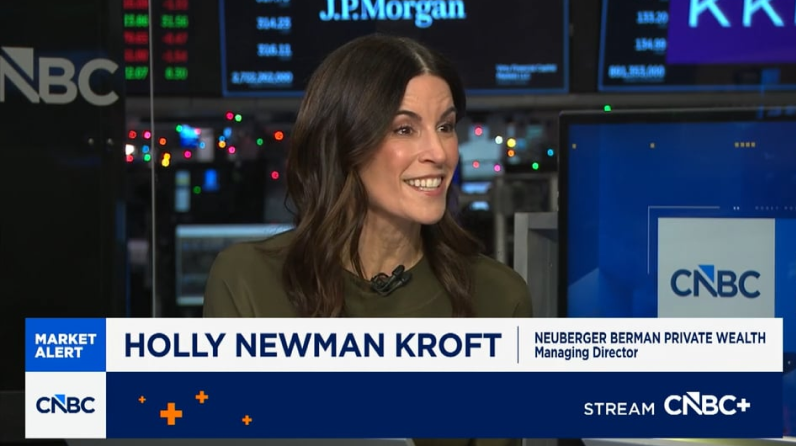

January’s data seemingly supports the Fed’s current stance of seeking greater confidence that inflation is firmly on the path to 2%.
January U.S. inflation data, released today, came in hotter than expected for the third month in a row. Headline CPI was up +0.3% month-over-month and up +3.1% year-over-year, versus expectations of +0.2% and +2.9%, respectively. Core CPI was up +0.4% on a month-over-month basis and up +3.9% on a year-over-year basis compared with a consensus expectation of +0.3% and +3.7%, respectively.
In our view, the persistence in core inflation is perhaps the most troubling aspect of today’s print. Shelter remains a primary driver, as shelter costs rose by +0.6% month-over-month, and +6.0% year-over-year, compounding increases of +6.2% and +6.5% in the prior two months. In addition, costs for auto insurance and health insurance were both up +1.4% month-over-month and medical care services were up +0.5% month-over-month. (These increases helped to drive an increase in the core services ex. housing metric, which rose by +0.85% in January.) Solace, and an offset to these hotter prints, was found in used cars and apparel, which both exhibited declines; in fact, goods remain squarely in deflationary territory.
The higher print in headline CPI was driven in part by an increase in food prices, as four of the six major grocery food group indexes increased over the month. Breaking it down, food at home was up +0.4% month-over-month, and food away from home was up +0.5% month-over-month. Renewed pressure on higher food prices, if it persists, would likely be reflected in retail sales and consumer confidence readings. With lower-income households already feeling the sting of previous price increases and elevated borrowing costs, the divergence between higher-income and lower-income households’ spending could widen—a dynamic that will not escape the Federal Reserve’s (Fed)’s attention.
Equity markets have been pressured lower following today’s release, with the Nasdaq dropping by almost -1.8% following the open; both 2 Year and 10 Year Treasury yields moved higher in response. In terms of Fed expectations, the CME FedWatch Tool now reflects that the probability of a rate cut in March has moved from 16% yesterday to 6.5% today. (To put this in context, the probability was almost 77% only a month ago.) Pushing out to May, the probability of a rate cut now sits at only 36%.
We believe that January’s data seemingly supports the Fed’s current stance of seeking greater confidence that inflation is firmly on the path to 2%. While both the bond and equity markets reacted negatively to the reading coming in above consensus, the threat of a meaningful re-acceleration in inflation appears at this point to be low. The U.S. economy has been stronger than anticipated, but structural sources of inflationary pressure, such as shipping costs, energy prices and wages, are either moving consistently lower or are already anchored near the desired level. In our view, this continues to support the notion of rate cuts in 2024, albeit fewer than what had been priced in coming into the year.


INSIGHTS
CIO Notebook: December CPI Softer but Unlikely to Change the Course

Accolades
The 2026 Forbes | SHOOK Best-In-State Wealth Management Teams list

INSIGHTS
CIO Notebook: Sluggish Job Growth Points to Steady Rates, For Now

MARKET COMMENTARY
Taking Stock of 2025

VIDEO
Holly Newman Kroft Featured on CNBC’s Money Movers December 18

VIDEO
The Kantor Group | Charles Kantor’s Year-End Reflections and Key Questions as We Head Into 2026

INSIGHTS
CIO Notebook: Dual Release of Delayed Non-Farm Payrolls Likely Supports Another Cut
INSIGHTS
Using Tax-Free Gifts for Wealth Transfer
INSIGHTS
CIO Notebook: Powell Plays the Middle as Fed Cuts Rates
MARKET COMMENTARY
Giving Thanks for Market Strength
INSIGHTS
CIO Notebook: September U.S. Non-Farm Payrolls Further Complicate the Narrative
VIDEO
Holly Newman Kroft Featured on CNBC’s Money Movers November 18
VIDEO
Plan for Peace of Mind with Our Estate Planning Organizer
IMPORTANT INFORMATION:
This material is provided for informational purposes only and nothing herein constitutes investment, legal, accounting or tax advice, or a recommendation to buy, sell or hold a security. This material is general in nature and is not directed to any category of investors and should not be regarded as individualized, a recommendation, investment advice or a suggestion to engage in or refrain from any investment-related course of action. Any views or opinions expressed may not reflect those of the firm as a whole. Neuberger Berman products and services may not be available in all jurisdictions or to all client types. Diversification does not guarantee profit or protect against loss in declining markets. Investing entails risks, including possible loss of principal. Investments in private equity are speculative and involve a higher degree of risk than more traditional investments. Investments in private equity are intended for sophisticated investors only. Unless otherwise indicated, returns shown reflect reinvestment of dividends and distributions. Indexes are unmanaged and are not available for direct investment. Investing entails risks, including possible loss of principal. Past performance is no guarantee of future results.
Portfolio positioning views expressed herein are those of Neuberger Berman’s Private Wealth Investment Group, which may include those of the Neuberger Berman’s Asset Allocation Committee. Asset allocation and positioning views are based on a hypothetical reference portfolio. The Private Wealth Investment Group analyzes market and economic indicators to develop asset allocation strategies. The Private Wealth Investment Group works in partnership with the Office of the CIO. The Private Wealth Investment Group also consults regularly with portfolio managers and investment officers across the firm. The Asset Allocation Committee is comprised of professionals across multiple disciplines, including equity and fixed income strategists and portfolio managers. The Asset Allocation Committee reviews and sets long-term asset allocation models, establishes preferred near-term tactical asset class allocations and, upon request, reviews asset allocations for large, diversified mandates. Asset Allocation Committee members are polled on asset classes and the positional views are representative of an Asset Allocation Committee consensus. The views of the Asset Allocation Committee and the Private Wealth Investment Group may not reflect the views of the firm as a whole and Neuberger Berman advisers and portfolio managers may take contrary positions to the views of the Asset Allocation Committee or the Private Wealth Investment Group. The Asset Allocation Committee and the Private Wealth Investment Group views do not constitute a prediction or projection of future events or future market behavior. Defensive positioning generally means an underweight bias on allocations to risk assets such as equities and alternatives. Positioning views may change over time without notice and actual client positioning may vary significantly. Discussion of yield characteristics or total returns of different asset classes are for illustrative purposes only. Such asset classes, such as equities and fixed income, may have significantly different overall risk-return characteristics which should be consider before investing.
The information in this material may contain projections, market outlooks or other forward-looking statements regarding future events, including economic, asset class and market outlooks or expectations, and is only current as of the date indicated. There is no assurance that such events, outlook and expectations will be achieved, and actual results may be significantly different than that shown here. The duration and characteristics of past market/economic cycles and market behavior, including any bull/bear markets, is no indication of the duration and characteristics of any current or future be market/economic cycles or behavior. Information on historical observations about asset or sub-asset classes is not intended to represent or predict future events. Historical trends do not imply, forecast or guarantee future results. Information is based on current views and market conditions, which will fluctuate and may be superseded by subsequent market events or for other reasons.
Discussions of any specific sectors and companies are for informational purposes only. This material is not intended as a formal research report and should not be relied upon as a basis for making an investment decision. The firm, its employees and advisory accounts may hold positions of any companies discussed. Nothing herein constitutes a recommendation to buy, sell or hold a security. It should not be assumed that any investments in securities, companies, sectors or markets identified and described were or will be profitable. Investment decisions and the appropriateness of this content should be made based on an investor's individual objectives and circumstances and in consultation with his or her advisors.
Neuberger Berman Investment Advisers LLC is a registered investment adviser.
The “Neuberger Berman” name and logo are registered service marks of Neuberger Berman Group LLC.